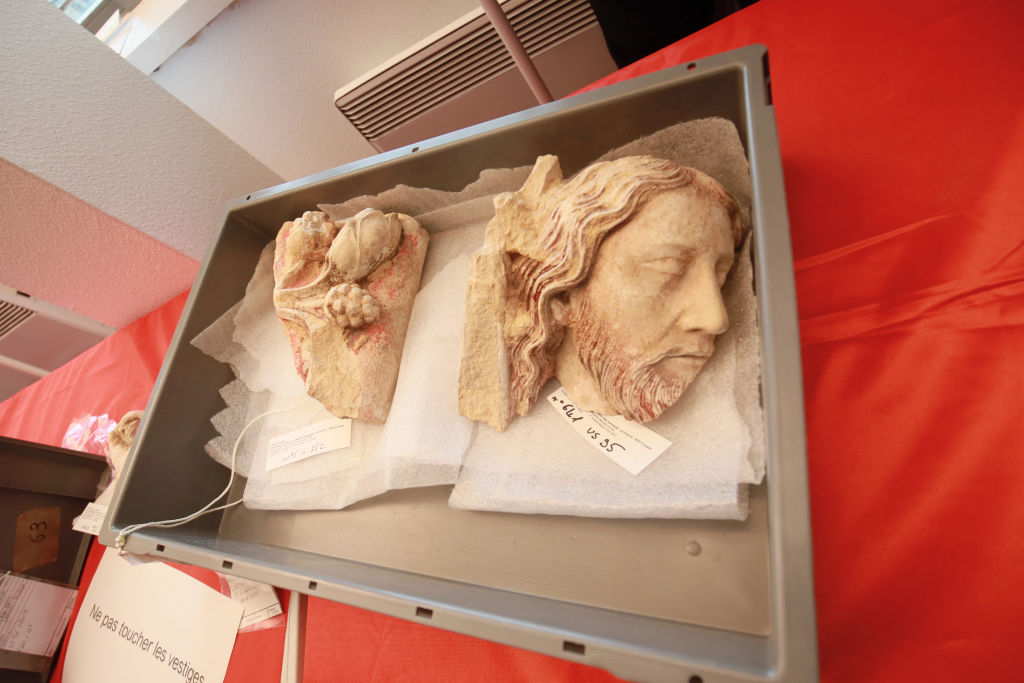After a blaze nearly destroyed Notre Dame Cathedral in Paris, archaeologists had a rare opportunity to dig underneath the building’s structure during its five-year renovation and reconstruction, and found more than 1,000 fragments of historical artworks.
It would have been unfathomable to dig up the famous cathedral before the fire. However, archaeologists now had the chance per a French law on preventative archaeology, which can be used “to detect and undertake the scientific study of archaeological remains (on land and underwater) that might otherwise be destroyed by land development work.” The process began in February 2022.
Teams from the Institut National de Recherches Archéologiques Préventives (National Institute for Preventive Archaeological Research), including one spearheaded by Christophe Besnier, who was initially given only five weeks to dig under Notre Dame’s stone floor, were allowed to dig a shallow 16 inches beneath the floor at the same depth as the scaffolding’s foundation.
“The remains turned out to be much richer than expected,” Besnier told National Geographic.
Experts found as many as 1,035 artwork fragments, as well as one hundred graves increasing the cathedral’s total record to more than five hundred burials. Many of the coffins, along with scattered bones, remain unidentified.
A lead sarcophagus that may belong to the poet Joachim du Bellay is among one of the more notable burials.
Life-sized heads and torsos of limestone statues, including one of Christ, were also unearthed. A 13th-century jubé or rood screen that previously separated the choir and sanctuary from public view was among the more significant architectural finds.
Researchers also came to better understand how Notre Dame was originally constructed by artisans in the Middle Ages. A study of the charred beams, for instance, offered greater insight on the climate during that time.
Medieval carpenters used roughly 100-year-old oak trees at approximately 49-feet long shaped with a doloire axe. Rope holds found in the wood would have tied the logs together for transport via the Seine River.
The heavy use of iron clamps used to bind stones together shed further light on building processes. The oldest clamps, roughly 10 to 20 inches long, dated to the beginning of the cathedral’s construction in the 1160s—making Notre Dame the first Gothic cathedral using iron as a building material. Additionally, stone cutting techniques could be seen along the rocky surfaces and a reuse of materials was discovered among second roof over the choir from the 13th century.
Pillars, previously unseen among the cathedral’s foundations, are connected by longrines beams to distribute the building’s weight. The complete analysis of Notre Dame helped in not only documenting what is there, but to further authenticate Medieval artifacts such as the large rose stained glass windows in the cathedral’s transept.
Notre Dame officially reopens to the public on Sunday, December 8.

